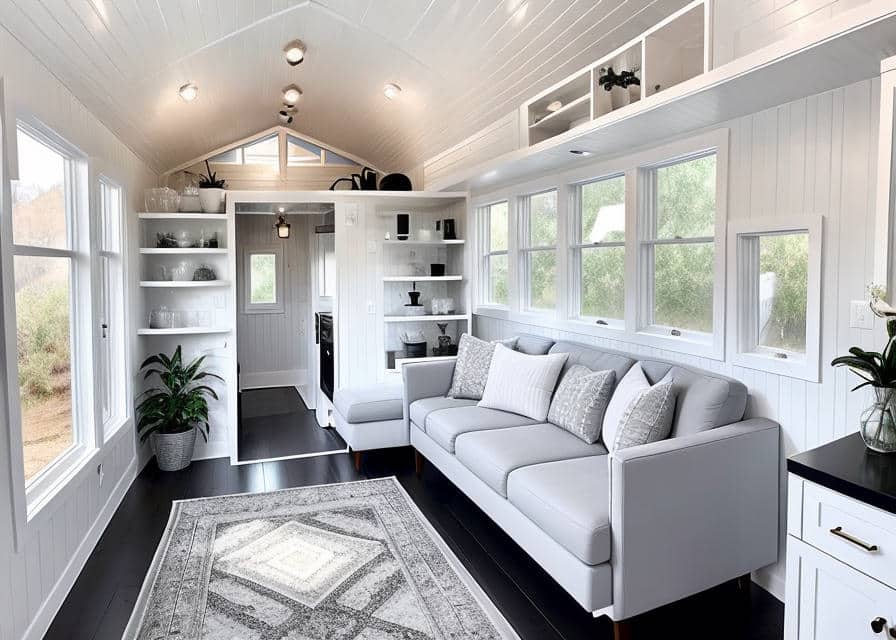Tiny Home Living: Big Adventures in Small Spaces
In recent years, the tiny home movement has captured the imagination of many individuals seeking an alternative lifestyle. This movement advocates for downsizing one's living space to a fraction of the size of a traditional home.

Introduction to Tiny Home Living

In recent years, the tiny home movement has captured the imagination of many individuals seeking an alternative lifestyle. This movement advocates for downsizing one's living space to a fraction of the size of a traditional home. But what exactly is the tiny home movement, and why has it gained such popularity?
Advantages of Tiny Home Living
Financial Benefits
One of the primary attractions of tiny home living is its affordability. With significantly lower construction costs and reduced utility bills, tiny homes offer a more financially sustainable option for homeownership.
Environmental Impact
Tiny homes have a smaller ecological footprint compared to traditional houses. Their compact size requires fewer building materials and consumes less energy for heating and cooling, making them a more environmentally friendly choice.
Simplified Lifestyle
Living in a tiny home encourages a minimalist lifestyle, where possessions are pared down to the essentials. This simplification can lead to reduced stress, increased freedom, and a greater focus on experiences rather than material possessions.
Challenges of Tiny Home Living
Limited Space
While the compact size of tiny homes is a selling point for some, it can also pose challenges in terms of storage and living space. Creative solutions are necessary to maximize the functionality of every square foot.
Zoning and Legal Issues
Zoning regulations and building codes can present obstacles for those interested in tiny home living. Many municipalities have restrictions on minimum dwelling sizes and zoning requirements that may prohibit or limit the construction of tiny homes.
Social Perceptions
Tiny homes are still relatively uncommon compared to traditional housing options, which can lead to skepticism or misunderstanding from friends, family, and society at large. Overcoming these social perceptions requires education and advocacy for the benefits of tiny home living.
Stories from Tiny Home Dwellers
Personal Experiences and Insights
Many individuals who have embraced tiny home living have inspiring stories to share. From financial freedom to a closer connection with nature, these personal accounts offer valuable insights into the rewards and challenges of tiny home living.
Tips for Successful Tiny Home Living
Design Considerations
When designing a tiny home, every inch of space matters. Clever design solutions, such as multifunctional furniture and innovative storage solutions, can maximize the usability of a small living area.
Organization Hacks
Effective organization is essential for maintaining a comfortable and clutter-free living environment in a tiny home. Strategies such as vertical storage, minimalism, and regular decluttering can help maximize space and minimize stress.
Maximizing Space
Living in a tiny home requires a mindset shift towards prioritizing space and functionality over excess. By carefully considering the layout and purpose of each area, tiny home dwellers can make the most of their limited square footage.
Lifestyle Adjustments
Embracing Minimalism
Tiny home living encourages a minimalist lifestyle, where individuals prioritize experiences and relationships over material possessions. Letting go of unnecessary belongings and embracing simplicity can lead to greater fulfillment and freedom.
Sustainable Living Practices
Tiny homes offer an opportunity to live more sustainably by consuming fewer resources and reducing waste. Practices such as composting, rainwater harvesting, and renewable energy can further minimize environmental impact.
Community Engagement
Despite their small size, tiny homes can foster a strong sense of community among like-minded individuals. Participating in tiny home events, workshops, and online forums can provide support, inspiration, and camaraderie.
Tiny Home Living: A Sustainable Choice
Energy Efficiency
Due to their small size and efficient design, tiny homes require less energy for heating, cooling, and lighting compared to traditional houses. This increased energy efficiency not only reduces utility bills but also lowers carbon emissions.
Reduced Carbon Footprint
By consuming fewer resources and generating less waste, tiny homes contribute to a smaller carbon footprint overall. Their focus on sustainability and environmental stewardship aligns with the growing global movement towards eco-conscious living.
Conclusion
Tiny home living offers a unique opportunity to simplify one's life, reduce expenses, and minimize environmental impact. While it comes with its own set of challenges, the rewards of tiny home living—financial freedom, environmental sustainability, and a greater sense of community—are well worth the journey.
FAQs
- What is the average cost of building a tiny home?Building costs vary depending on factors such as size, materials, and location, but the average range is between $20,000 and $100,000.
- How do you deal with zoning regulations?Zoning regulations vary by location, so it's essential to research local laws and ordinances and work with officials to find solutions that comply with regulations.
- Can a tiny home accommodate a family?Yes, many families live comfortably in tiny homes, but careful planning and organization are necessary to make the most of limited space.
- What are some common misconceptions about tiny homes?Common misconceptions include the belief that tiny homes are cramped and uncomfortable or that they lack essential amenities. In reality, tiny homes can be cozy, functional, and well-equipped.
How do you find land for a tiny home?Finding land for a tiny home can be challenging due to zoning restrictions and availability, but options include purchasing land, leasing space in a tiny home community, or seeking out alternative arrangements.